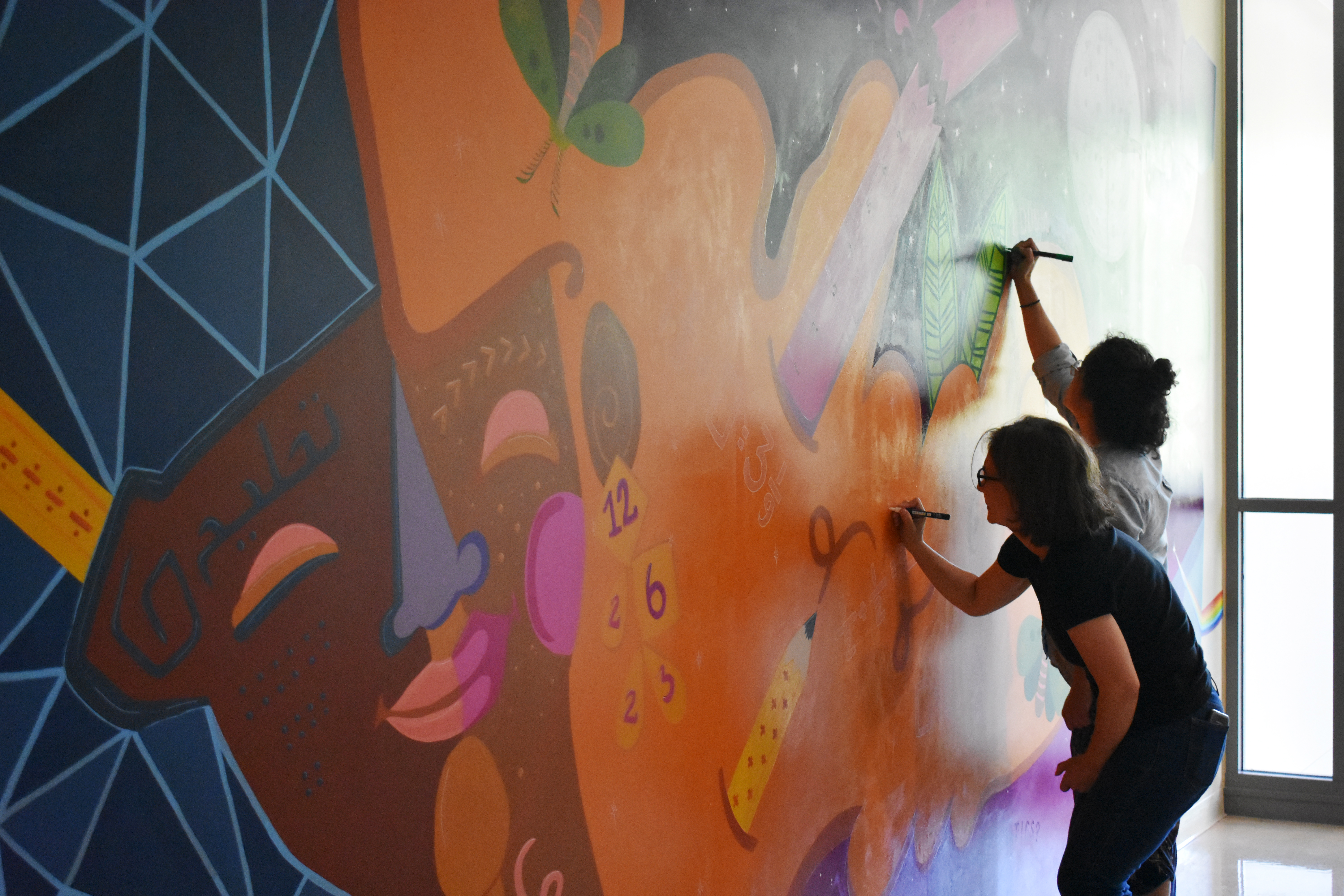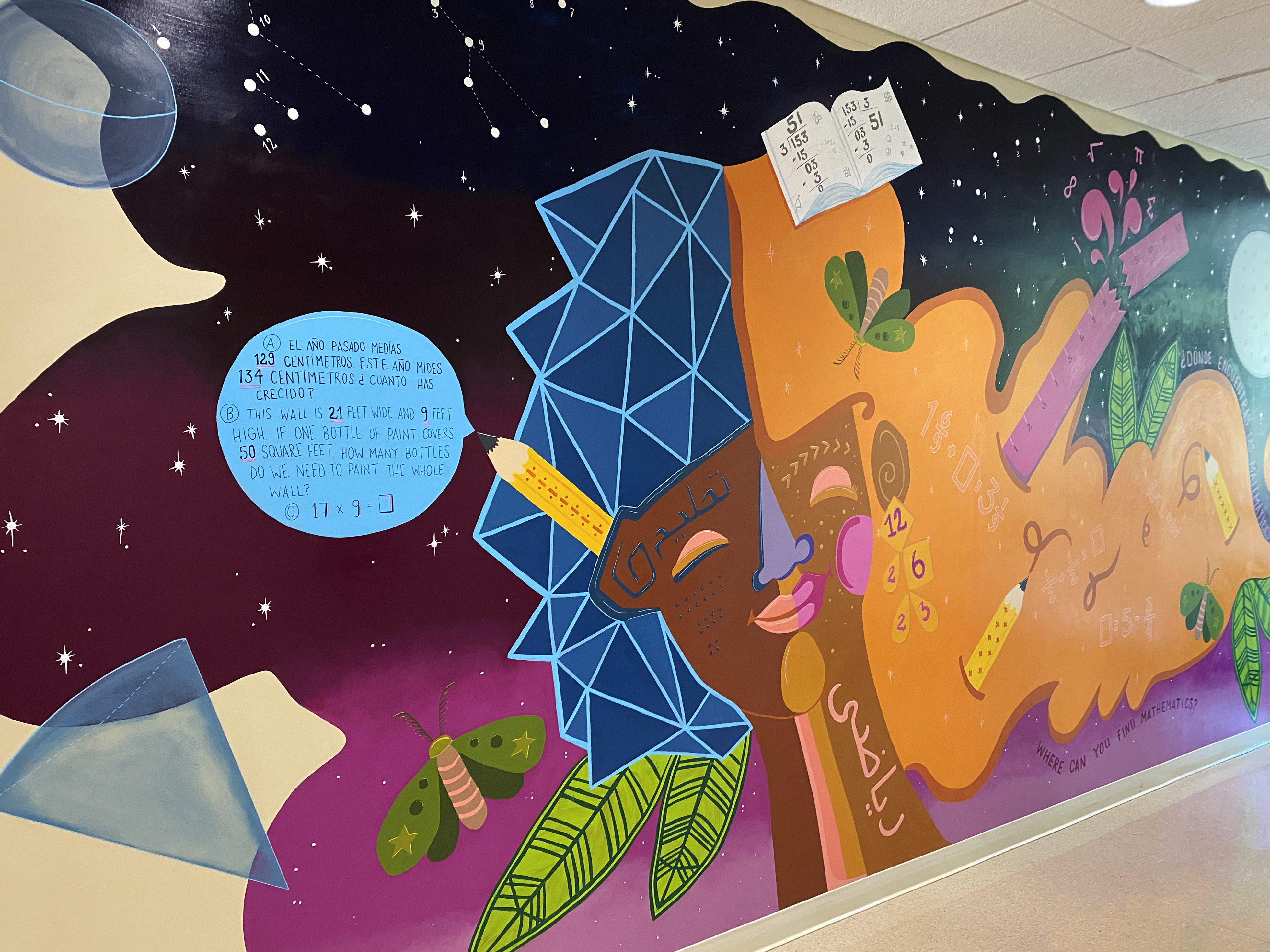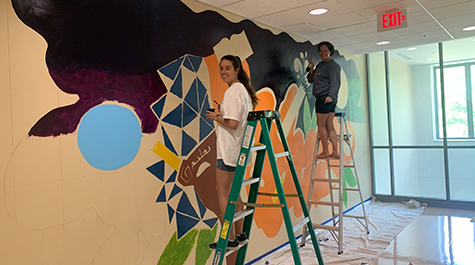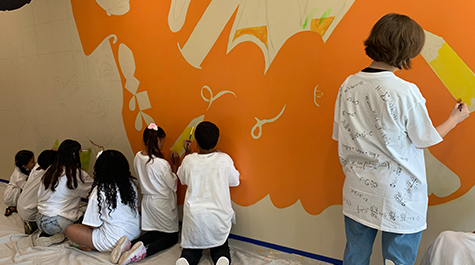How many stars can you count…in a new mural at the School of Education?
Fueled by a grant awarded to Professor Gladys Krause from the National Science Foundation (NSF), local Williamsburg students attended a camp this past summer at William & Mary designed to bring mathematics learning to life through the creation of an art mural, now displayed at the School of Education. Dr. Krause collaborated with Williamsburg-James City County (WJCC) ESL teacher Caroline Finchum, and artist Maria Emilia ’11, to launch this project.
Over the last school year, Dr. Krause collaborated with Mrs. Finchum in her ESL classroom. At the end of the school year, students in Mrs. Finchum’s classroom continued to learn about mathematics in a summer camp designed as part of Dr. Krause’s research grant.
During the summer camp, students applied what they had been learning in Mrs. Finchum’s class to create the mural. “During the school year students were aware that at the end of the school year we were going to create a mural. Then students shared ideas of what they wanted to see and make for the mural,” Dr. Krause related. Based on these ideas, artist Maria Emilia developed some sketches and, in collaboration with Dr. Krause, Mrs. Finchum, and the students, the mural came to life.
Although mathematical ideas were central to the learning experience of the students, teacher, artist, and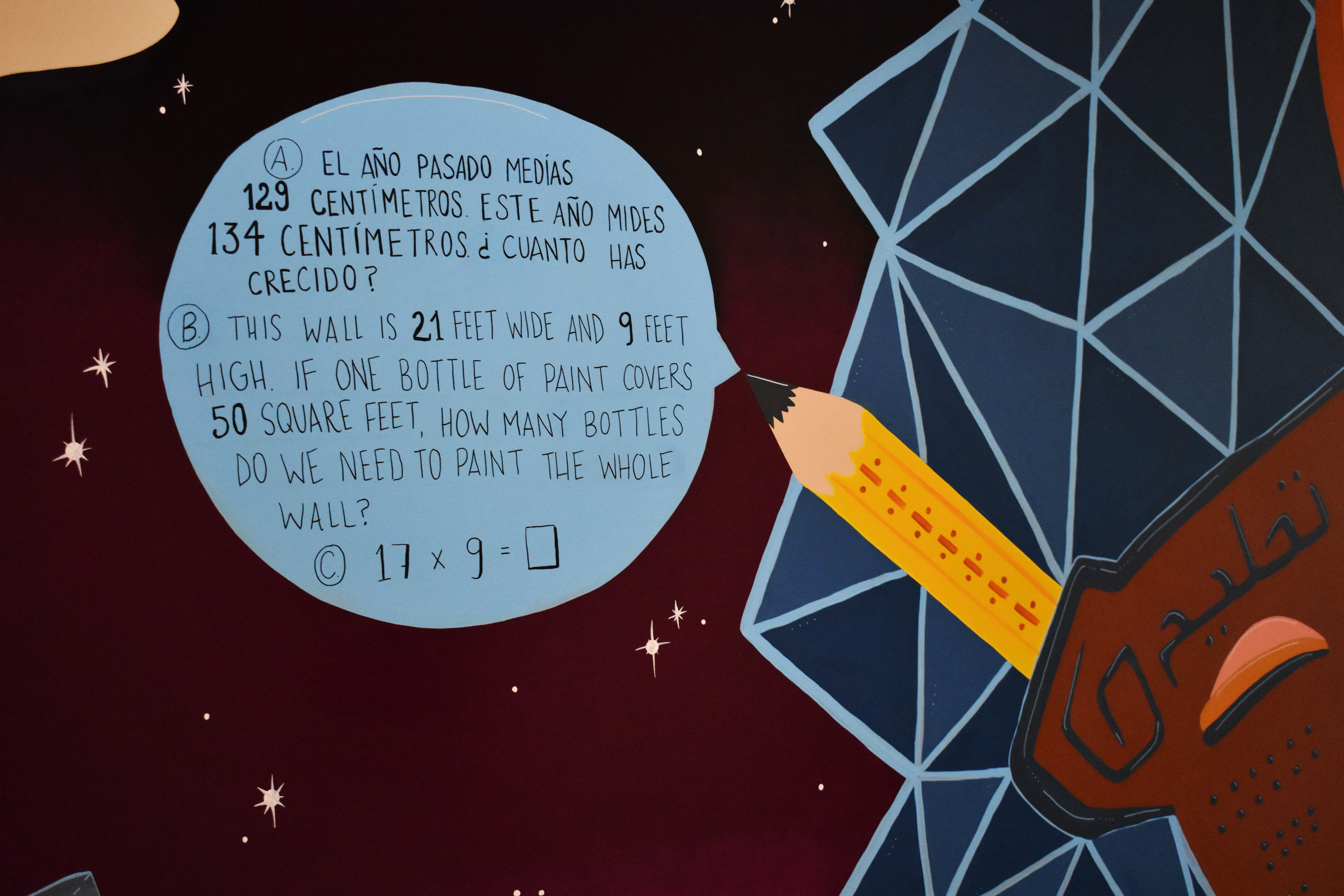 researcher, language also provided a focal point for the group’s work. “Language was an important component of the community we established and a part of the learning process,” described Dr. Krause. Everyone practiced and learned how to write and say numbers in Pashto and Spanish and described mathematics concepts in different languages. Students practiced scaling with shadows to transform their small drawings into a large mural, measured the space using area and perimeter, determined how much paint was needed, and used the notion of mathematical proportion to mix the colors they wanted for each section. They used mathematics in both the process of creating the mural and the final product, reflected by how the mural embeds elements of mathematics and the students’ languages into the design. Mathematical concepts and different linguistic expressions are interwoven throughout the mural, so that, regardless of your linguistic background, “you can play with math if you sit there long enough, because each element is intentional,” shares Maria Emilia.
researcher, language also provided a focal point for the group’s work. “Language was an important component of the community we established and a part of the learning process,” described Dr. Krause. Everyone practiced and learned how to write and say numbers in Pashto and Spanish and described mathematics concepts in different languages. Students practiced scaling with shadows to transform their small drawings into a large mural, measured the space using area and perimeter, determined how much paint was needed, and used the notion of mathematical proportion to mix the colors they wanted for each section. They used mathematics in both the process of creating the mural and the final product, reflected by how the mural embeds elements of mathematics and the students’ languages into the design. Mathematical concepts and different linguistic expressions are interwoven throughout the mural, so that, regardless of your linguistic background, “you can play with math if you sit there long enough, because each element is intentional,” shares Maria Emilia.
Through this summer camp they all built a strong community. “It was awesome watching the students wonder, solve problems, think about situations, and come to a solution together. It stretched our creativity as educators. We needed to think more deeply about how we communicated to help the students work together and celebrate each others' languages and cultures. There is such power in including students in real-world projects bigger than themselves and enabling them to work as a diverse team,” said Mrs. Finchum.
“It was a teaching experience and a communal event -- it was fulfilling for those who participated because it was so visual and concrete. The mural is loud and makes a big statement, and it gave students the opportunity for a visual voice with a simple stroke of a paintbrush. Participating in something so palpably large allowed our little camp community to feel connected to a bigger goal. I want more kids to have the opportunity the campers had this summer by incorporating art and math like this in schools,” shares Maria Emilia.
This work illuminated the value of having the time, space, and funding to collaborate and demonstrate how mathematics is connected to what we do every day. Mrs. Finchum notes, “I saw students rise to the task, be engaged, and build skills to accomplish what was in front of them. When there are more opportunities for students to see the applications of mathematics, it heightens their engagement, which makes the learning experiences more impactful and valuable as they build skills to move into the real world.”
This experience brought together a community through art, integrating language and teaching mathematics, leaving a finished product for others to learn from and enjoy. The mural is located on the second floor of the School of Education, adjacent to the Learning Resource Center. Below you can view a photograph of the mural’s work in progress and another of the finished product!
